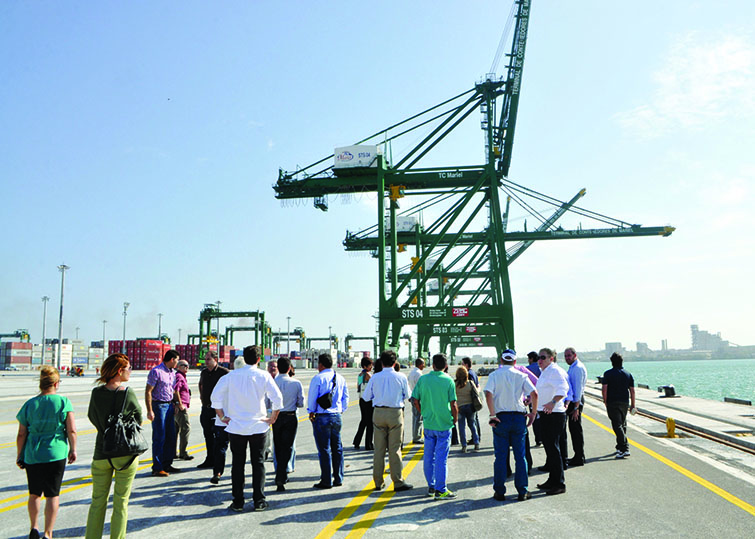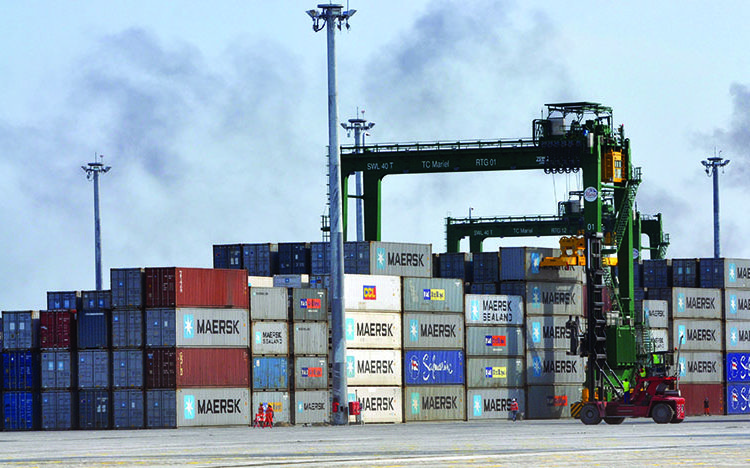By: Pavel Vidal Alejandro
One point that is always debated in discussions about Cuba is the real cause of its major economic problems. For some, the U.S. embargo is what explains the average Cuban family’s low income, the run-down facades of Havana’s buildings, and the persistent lack of goods in consumer markets. For others, all of that is just an external justification obfuscating the real cause, which is the inefficiency of a Soviet-style centrally planned system. A third, more balanced perspective would be that both of these factors have hurt the Cuban economy’s performance and the everyday lives of Cubans.
After an 18-month long negotiation process, this past Dec. 17 marked the opening of a new chapter in relations between Cuba and the United States, one that will lead to the restoration of diplomatic relations and the implementation of a set of measures proposed by President Obama. In addition, this opens the way to a complex political and legislative process in the U.S. Congress that eventually could lead to a total lifting of the economic embargo that weighs on the island.
Even without eliminating the embargo, the announced measures could begin to gradually benefit the Cuban economy. Some effects will be more direct and tangible and will be appreciable in tendencies of tourism, remittances and goods and services that arrive in Cuba from the United States, while other effects will be more indirect, depending on what kind of signal is sent to the international economic and financial community and the restoration of U.S.-Cuba relations.
More commerce and tourism
Based on a series of measures that make the embargo more flexible, since 2002 Cuba has been allowed to import food and certain pharmaceutical products from the United States. This commerce grew despite the fact that it included no financial facilities; on the contrary, Cuba has had to pay upfront for all merchandise. The high point of these imports—$711 million—was reached in 2008.
Another element that has characterized economic relations between the two countries has been the flow of tourists from the United States to the island. More than 90,000 people from that country visited Cuba annually, despite restrictions on their spending and imports, and the fact that they had to request a specific license for this travel.
Obama’s abovementioned speech enumerates a set of measures that unquestionably will lead to an increase in Cuban imports and the number of U.S. tourists. Nevertheless, before we can gauge the speed and magnitude of this increase, we will have to wait for regulations to be issued and for details on their implementation.
A boost for private business
Washington’s new policy explicitly indicates that one of its main objectives is to “foster the growth of entrepreneurship and the private sector in Cuba.” Cuba’s National Office of Statistics and Information (ONEI) reports that in 2013, people involved in the non-state sector represented 26 percent of total employment. Despite the continuous growth of these new businesses, their net job creation has been declining.
The private sector has suffered restrictions on imports and on having the inputs it needs to operate; moreover, the demand for its services has not grown, because the purchasing power of ordinary Cubans has not grown during the reform process.
If the measures announced by the White House effectively lead to increased tourism, the private sector will benefit from heightened demand and from permission to import supplies from the United States, although many questions remain about how this commercial flow will function.
In addition to limitations stemming from low demand and restrictions on inputs, private businesses also have had difficulties in accessing bank financing. Self-employed workers and private micro and small businesses have received just 2.6 percent of the new credits authorized since 2012.
This data confirms that remittances and private resources are the financing sources that have made the private sector dynamic, and that bank credits have contributed very little. That is why we can predict that Obama’s measures also will benefit the private sector through the channel of financing, given that the proposal is to increase limits on remittances from $500 to $2,000 quarterly.
Increased investments and GDP growth
Foreign investors usually view Cuba’s high rates of education and security as attractive features of this market. The island’s geographic location and proximity to the United States also are viewed as favorable elements. Until the embargo is completely eliminated, Cuba-based businesses will not be able to export goods and services to the United States, but with the new changes to U.S. policy, that day seems to be nearer, multiplying the expected future profitability of doing business in Cuba.
The Secretary of State has been instructed to initiate a review of Cuba’s designation as a state sponsor of terrorism and to present a report within six months. Cuba’s exclusion from the list of states that sponsor terrorism will reduce enormously the financial costs and risks of being linked to the Cuban economy.
While entry into the Cuban market continues to be prohibited for U.S. companies, the recent announcements are excellent, promising news for companies from other countries, which is why we can expect a significant increase in investment in the Cuban economy. This would boost the GDP to rates between 5 percent and 6 percent in the coming years.
Will the reform go deeper?
This new chapter in the history of relations between these two countries comes after six years of reforms promoted by President Raúl Castro, reforms that made it easier for President Obama to make his decision to change Cuba policy. At the same time, it might be expected that the new context will lead to progressively deeper changes in Cuba.
More positive short-term economic results could increase popular support for these changes. Less belligerent relations with the United States would take away arguments for practices that are distant from international standards. External influences on a country that is more economically and financially integrated into the international community also would promote deeper change.
Obviously, the process that is unfolding contains many political uncertainties, but one scenario that is optimistic without being crazy would be the simultaneous advance of the dismantling of the embargo and systematic reform of the Soviet-style model. If that were to happen, we might never know who was really responsible for the Cuban economy’s big problems.

Measures that will promote imports and travel from the USA
-Permission to export certain construction materials, goods for private-sector use and equipment for small farmers.
-Authorization to export certain consumer communications devices, software, applications and hardware.
-Telecommunications providers will be allowed to establish the necessary mechanisms in Cuba, including infrastructure, to provide commercial telecommunications and Internet services, which will improve telecommunications between the United States and Cuba.
-U.S. institutions will be allowed to open accounts in Cuban financial institutions to facilitate authorized transactions and the creation of other facilities for paying for U.S. exports.
-General licenses for travel to Cuba will be expanded for 12 authorized categories.
-Licensed travelers who go to Cuba will be permitted to import $400 worth of goods from Cuba, of which no more than $100 can be alcohol and tobacco products.
-Travelers to Cuba will be allowed to use U.S. credit and debit cards.










